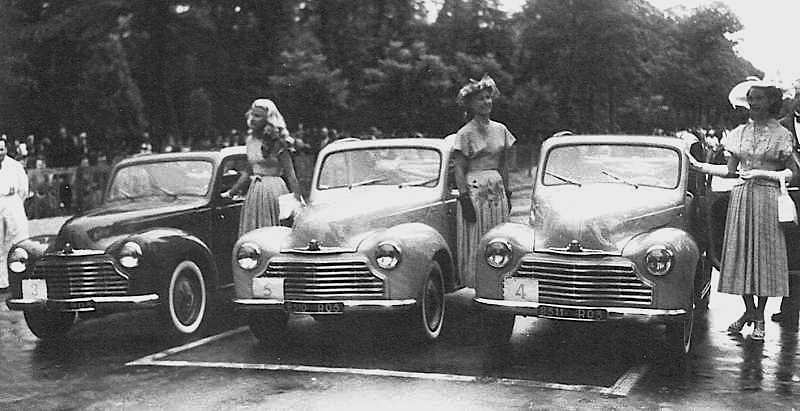Chrysler's styling boss Tom Gale and others in the corporation were hot rod fans, which should go a long ways to explain the PT Cruiser's mid-1930s inspired body and raked front end -- the latter a fairly common hot rodder practice in the years around 1950 where the victim cars were usually Ford V8s.
Alas (maybe), I was never a hot rod fan. For that reason I've always been neutral regarding the Cruiser's design. That is, I appreciate the concept and the courage required to market the car, but it never appealed to me as a potential driver (though I test-drove one once).
Two views of the 1935 Ford Tudor V8. The 1936 model used the same body but had a different grille. Both years' Fords were popular targets for hot rodders and customizers. These Fords had relatively short wheelbases resulting in a stubby appearance, a trait shared by the PT Cruiser.
Side view of a PT Cruiser. Note the lowered front rake. Hot rodders sometimes would drop only the front end, sometimes the rear, and even would drop the road clearance for the entire car. Dropping the rear didn't work well for mid-1930s cars, so it's almost always found on customs based on 1938-1951 vintage automobiles.
I like the distinct front and rear fenders simply because they are a change from the slab-sided designs that have been common since around 1950. Nice touches are the small firming-up ridges by the tops of the wheel openings and the hood cut line that becomes a character line extending around the rest of the car.
A PT Cruiser feature I think needed improvement is the grille. In a way it reminds me of 1932-33 DeSoto grilles that I wrote about here. Perhaps the horizontal bars should have been given more emphasis and the number of vertical bars reduced.
It if wasn't clear from previous photos, this rear 3/4 view shows that the PT Cruiser was actually something of a station wagon / crossover SUV. Without this style, the car would have had little room for carrying luggage and other items.































